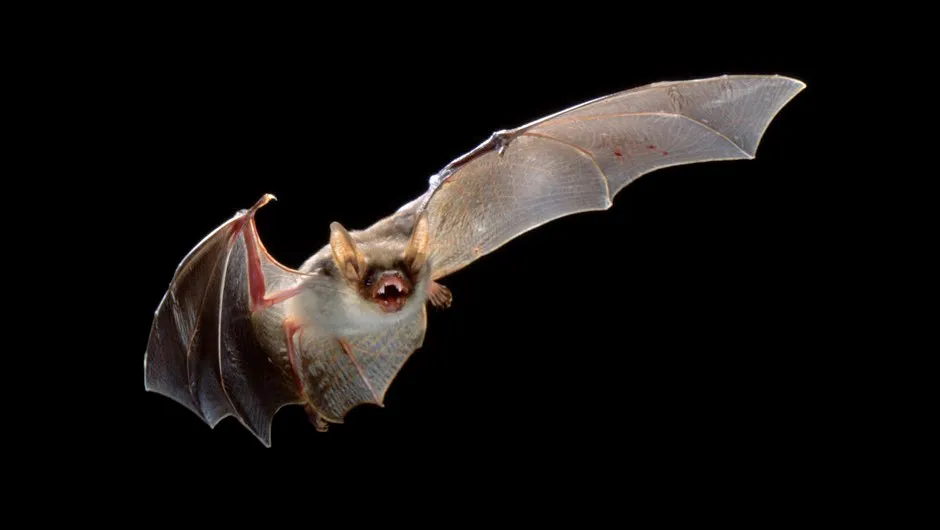Global wildlife monitoring needs to be stepped up to reduce the risk of future pandemics, experts have warned.
Scientists from the Wildlife Disease Surveillance Focus Group want improvements on the testing and tracking of organisms that cause disease, known as pathogens, in wildlife to help avoid another worldwide outbreak.
Previous outbreaks of new diseases such as SARS and MERS were caused by the crossover of pathogens from animals to humans.
SARS-CoV-2, the coronavirus responsible for COVID-19, is thought to have originated in bats and moved into other wildlife hosts before crossing over into humans.
The lack of knowledge about how the step between animals and humans happened highlights the need for improved surveillance, the group said.
Read more about COVID-19 and animals:
- Pangolins were not involved in the transmission of SARS-CoV-2, study suggests
- Bats 'pose no greater viral threat' to humans than other species
- Transmission of viruses from animals to humans is 'a direct result of our actions'
To avoid a repeat of COVID-19, wildlife must be tested closer to areas of risk, better use should be made of technology and greater oversight introduced for the international wildlife trade, the group said in an article published in the journal Science.
Currently, there is no wildlife trade pathogen screening, including of animals or their products that are eaten, transported or hunted as game.
The group said this lack of oversight is concerning, pointing out some 89 per cent of known RNA viruses – the class of viruses that SARS-CoV-2, MERS coronavirus and the Ebola disease belong to – that have the potential to cause harm to humans could cross over from animals.
It outlines recommendations including an increase in laboratory testing capacity at or near locations where humans and wildlife interact.

Europe and North America are home to 62 per cent of laboratories screening for animal pathogens, while the areas seen to be at most risk of emerging infectious diseases, such as Asia and Africa, account for 26 per cent and 3 per cent respectively.
Boosting testing technology by using small, cost-effective devices such as portable DNA sequencers in local testing centres – currently being trialled by the University of Edinburgh – could help address the issue, experts said.
The focus group also recommends creating a central public database to record animal virus characteristics to assist in monitoring the risk of crossover to humans.
It would enable any scientist to see how pathogens are evolving, how common they are worldwide and identify early potential targets mitigation measures, including antiviral treatments or vaccines.
Your coronavirus questions answered:
- Is hand-washing really the best thing we can do to stop the spread of COVID-19?
- What is viral load and why is it important to coronavirus?
- Coronavirus mythbuster: a GP separates the facts from the fake news
A further recommendation is to introduce international standards for the wildlife trade, particularly around screening for products which are transported.
The University of Edinburgh is part of the focus group.Its Zoological and Conservation Medicine chairwoman, Professor Anna Meredith, said: “We know that many diseases like COVID-19 can cross from animals to humans but we don’t focus enough on the animal side of the human-animal equation.
“Locally-driven surveillance and responses will empower local wildlife and public health professionals to constantly monitor for pathogens at source and improve the likelihood of prevention or early mitigation of future crossover events.”
Wildlife experts from Melbourne University, Washington University in St Louis, Missouri, and at San Diego Zoo are also part of the focus group.
How do viruses jump from animals to humans?
Every animal species hosts unique viruses that have specifically adapted to infect it. Over time, some of these have jumped to humans – these are known as ‘zoonotic’ viruses.
As our populations grow, we move into wilder areas, which brings us into more frequent contact with animals we don’t normally have contact with. Viruses can jump from animals to humans in the same way that they can pass between humans, through close contact with body fluids like mucus, blood, faeces or urine.
Because every virus has evolved to target a particular species, it’s rare for a virus to be able to jump to another species. When this does happen, it’s by chance, and it usually requires a large amount of contact with the virus.
Initially, the virus is usually not well-suited to the new host and doesn’t spread easily. Over time, however, it can evolve in the new host to produce variants that are better adapted.
When viruses jump to a new host, a process called zoonosis, they often cause more severe disease. This is because viruses and their initial hosts have evolved together, and so the species has had time to build up resistance. A new host species, on the other hand, might not have evolved the ability to tackle the virus. For example, when we come into contact with bats and their viruses, we may develop rabies or Ebola virus disease, while the bats themselves are less affected.
It’s likely that bats were the original source of three recently emerged coronaviruses: SARS-CoV (2003), MERS-CoV (2012) and SARS-CoV-2, the cause of the 2019-20 coronavirus outbreak. All of these jumped from bats to humans via an intermediate animal; in the case of SARS-CoV-2, this may have been pangolins, but more research is needed.
Read more:

